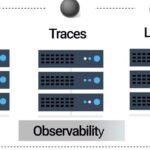European alternative: STACKIT vs DigitalOcean
- The Cloud Computing Landscape
- STACKIT Overview
- DigitalOcean Overview
- STACKIT vs DigitalOcean: A Feature Comparison
- Use Cases: When to Choose STACKIT or DigitalOcean
- Customer Reviews and Case Studies
- Performance Metrics: Uptime and Reliability
- Sustainability and Environmental Impact
- Making the Right Choice
- References
- Sources of Information and Further Reading
The Cloud Computing Landscape
The cloud computing landscape in Europe is evolving rapidly, with businesses increasingly turning to cloud services for their operational needs. The rise of cloud services has been driven by the demand for flexibility, scalability, and cost-effectiveness. As companies look for reliable cloud solutions, the focus has shifted towards local providers that can meet specific regional requirements.
Local cloud providers, such as STACKIT, are gaining traction as they offer tailored solutions that align with European regulations and standards. This is particularly important for businesses that prioritize data privacy and compliance, especially in light of the General Data Protection Regulation (GDPR).
Moreover, the emphasis on sustainability is becoming a key factor in the decision-making process for many organizations. European companies are increasingly seeking cloud providers that demonstrate a commitment to environmental responsibility and renewable energy.
STACKIT Overview
Introduction to STACKIT
STACKIT is a cloud service provider that has emerged as a strong contender in the European market. Launched by the Schwarz Group, which owns Lidl, STACKIT aims to provide businesses with a reliable and compliant cloud infrastructure. Its services are designed to cater to the needs of small and medium-sized enterprises (SMEs) across Europe.
With a focus on data security and privacy, STACKIT offers a range of cloud solutions that include Infrastructure as a Service (IaaS) and Platform as a Service (PaaS). This makes it an attractive option for businesses looking to migrate to the cloud while ensuring compliance with European regulations.
Key Features of STACKIT
Infrastructure as a Service (IaaS)
STACKIT's IaaS offerings provide businesses with virtualized computing resources over the internet. This allows organizations to scale their infrastructure according to their needs without the burden of maintaining physical hardware.
Platform as a Service (PaaS)
For developers, STACKIT offers PaaS solutions that simplify the application development process. This enables teams to focus on coding and deploying applications without worrying about the underlying infrastructure.
Managed Kubernetes and Container Orchestration
STACKIT also provides managed Kubernetes services, which facilitate the deployment, scaling, and management of containerized applications. This is particularly beneficial for organizations looking to adopt microservices architectures.
Pricing Structure of STACKIT
STACKIT's pricing is competitive, especially for SMEs. The transparent pricing model allows businesses to estimate costs effectively, avoiding unexpected fees. This is crucial for startups and smaller organizations with limited budgets.
DigitalOcean Overview
Introduction to DigitalOcean
DigitalOcean is a well-established cloud service provider based in the United States, known for its simplicity and developer-friendly approach. It offers a range of cloud services, including virtual servers (Droplets), managed databases, and Kubernetes solutions.
DigitalOcean has gained popularity among startups and developers due to its straightforward pricing and ease of use. However, its global focus may raise concerns for European businesses regarding data privacy and compliance with local regulations.
Key Features of DigitalOcean
Droplets and Virtual Machines
DigitalOcean's Droplets are scalable virtual machines that can be deployed in seconds. This flexibility allows developers to quickly spin up resources for testing, development, or production environments.
Managed Databases and Developer Tools
The platform offers managed database services that simplify database management, allowing developers to focus on building applications rather than maintaining infrastructure.
Kubernetes and Container Services
DigitalOcean's Kubernetes service provides a robust platform for deploying and managing containerized applications, making it a suitable choice for modern application development.
Pricing Structure of DigitalOcean
DigitalOcean's pricing is straightforward, with a pay-as-you-go model that appeals to startups and developers. However, businesses should be aware of potential hidden costs associated with additional services.
STACKIT vs DigitalOcean: A Feature Comparison
Infrastructure and Scalability
When comparing STACKIT and DigitalOcean, one of the key factors to consider is infrastructure and scalability. Both platforms offer robust solutions, but their approaches differ.
Performance Metrics
STACKIT focuses on providing high-performance infrastructure tailored for European businesses, ensuring compliance with local regulations. DigitalOcean, on the other hand, offers a global infrastructure that may not always align with European data privacy standards.
Deployment Options
Both platforms provide a variety of deployment options, but STACKIT's emphasis on local data centers may give it an edge for businesses prioritizing data sovereignty.
Pricing Comparison
Cost-Effectiveness for SMEs
STACKIT's pricing structure is designed with SMEs in mind, offering competitive rates and transparent billing. DigitalOcean also provides cost-effective solutions, but businesses should carefully evaluate potential hidden costs.
Hidden Costs and Additional Fees
It's essential for organizations to consider the total cost of ownership when selecting a cloud provider. STACKIT's clear pricing model helps mitigate unexpected expenses.
User Experience and Interface
Ease of Use for Developers
Both platforms are designed with developers in mind, but DigitalOcean's user interface is often praised for its simplicity and ease of navigation. STACKIT is also user-friendly, but may require a learning curve for new users.
Customer Support and Documentation
Customer support is a critical factor in cloud service selection. STACKIT offers localized support, which can be beneficial for European businesses. DigitalOcean provides extensive documentation and community support, making it a popular choice among developers.
Use Cases: When to Choose STACKIT or DigitalOcean
Best Use Cases for STACKIT
STACKIT is ideal for European SMEs that prioritize compliance and data privacy. Its services are well-suited for businesses in regulated industries, such as finance and healthcare.
Compliance-Driven Projects
Organizations that require strict adherence to GDPR and other regulations will find STACKIT to be a reliable partner.
Best Use Cases for DigitalOcean
DigitalOcean is an excellent choice for startups and developers looking for rapid development and deployment. Its global reach makes it suitable for applications targeting international markets.
Global Applications with Wider Reach
For businesses that need to reach a global audience, DigitalOcean's extensive data center network can provide the necessary infrastructure.
Customer Reviews and Case Studies
User Experiences with STACKIT
"STACKIT has been a game-changer for our SME. The local support and compliance with GDPR have made our transition to the cloud seamless." - A satisfied STACKIT customer
User Experiences with DigitalOcean
"DigitalOcean's simplicity and developer-friendly tools have accelerated our development process significantly." - A DigitalOcean user
Lessons Learned from Real-World Applications
Both STACKIT and DigitalOcean have their strengths and weaknesses. Analyzing user experiences can provide valuable insights for businesses considering their options.
Performance Metrics: Uptime and Reliability
Comparing Uptime Reliability
Uptime reliability is crucial for any cloud service. Both STACKIT and DigitalOcean boast high uptime percentages, but businesses should review service level agreements (SLAs) to understand the guarantees provided.
Backup Solutions and Disaster Recovery
Effective backup solutions and disaster recovery plans are essential for business continuity. Both providers offer robust options, but STACKIT's focus on local data centers may provide additional peace of mind for European businesses.
Sustainability and Environmental Impact
Commitment to Renewable Energy
As sustainability becomes a priority for many organizations, both STACKIT and DigitalOcean are making strides towards renewable energy usage in their data centers. STACKIT's commitment to local sourcing of energy aligns with European sustainability goals.
Comparing Sustainability Practices of STACKIT and DigitalOcean
Businesses should consider the environmental impact of their cloud provider. STACKIT's focus on sustainability may resonate more with European companies looking to reduce their carbon footprint.
Making the Right Choice
Summary of Key Differences
STACKIT and DigitalOcean offer distinct advantages and disadvantages. STACKIT excels in compliance and local support, while DigitalOcean is known for its simplicity and global reach.
Final Recommendations Based on Business Needs
Ultimately, the choice between STACKIT and DigitalOcean will depend on the specific needs of your business. Consider factors such as compliance, scalability, and support when making your decision.
References
Sources of Information and Further Reading
We invite you to share your thoughts! What do you think about the comparison between STACKIT and DigitalOcean? Do you have any experiences to share or questions about choosing a cloud provider? Let us know in the comments below!



Leave a Reply